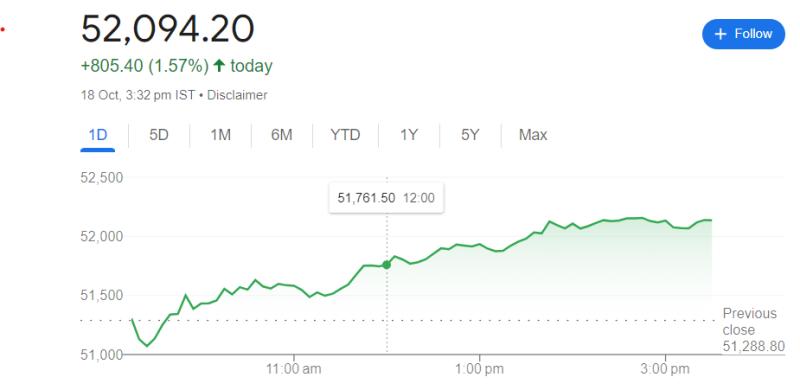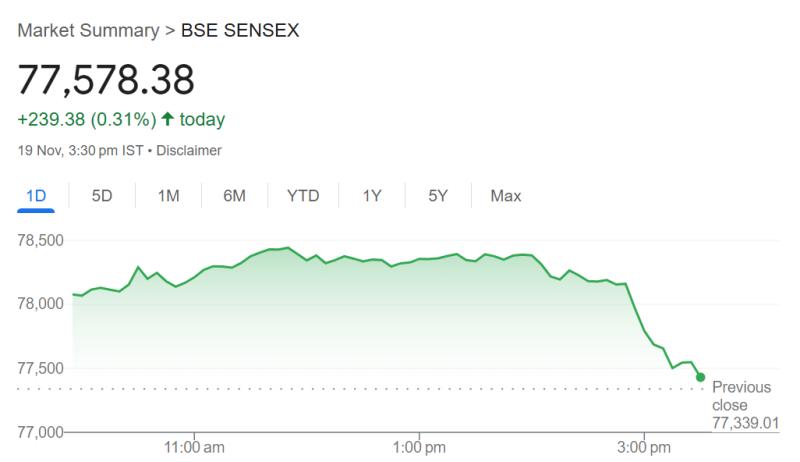Nifty Bank: A Comprehensive Guide for Traders and Investors

Nifty Bank, also referred to as Bank Nifty, is one of the
most popular stock market indices in India. It consists of the 12 most liquid
and large capitalized banking stocks from the National Stock Exchange (NSE).
Understanding the Nifty Bank index is crucial for traders and investors who
want to take advantage of the banking sector's performance in the stock market.
What is Nifty Bank?
Nifty Bank was introduced by NSE to measure the performance
of the banking sector. This index tracks the stock performance of 12 major
banks in India, including both private and public sector banks. As of today,
Bank Nifty stands at 52,094.
This index is widely traded in derivatives, such as Bank
Nifty futures and options, making it an attractive avenue for both day traders and
long-term investors.
Importance of Nifty
Bank
The banking sector is often considered a backbone of the
economy. Hence, Bank Nifty serves as an important indicator of market sentiment
in relation to the overall economic health of India. Investors closely watch
the Bank Nifty share price to make trading decisions, as the performance of
this index reflects the strength of the Indian banking sector.
Bank Nifty Today
Today’s market shows a robust performance in Bank Nifty,
reflecting the overall optimism in the banking sector. For real-time data,
traders can access Bank Nifty today live charts and monitor price movements.
Live tracking enables traders to make informed decisions based on the current
market conditions.
Bank Nifty Chart
Bank Nifty chart analysis is essential for understanding
historical data and making predictions for future movements. Many traders use
technical analysis tools like support and resistance levels, moving averages,
and candlestick patterns to predict Bank Nifty’s future performance. By
analyzing the Bank Nifty live chart, traders can better time their entries and
exits to maximize profits.
Bank Nifty Option
Chain
Options trading in Bank Nifty is highly popular among
traders looking for high volatility and profit potential. The Bank Nifty option
chain provides detailed information about the calls and puts for a given expiry
date. Traders use this data to gauge market sentiment and make short-term
trading decisions. On Bank Nifty expiry day, volatility often spikes, offering
traders opportunities to profit from price swings.
Bank Nifty Expiry
The Bank Nifty expiry date, typically on Thursdays, plays a
significant role in options trading. High volatility is seen on expiry day, as
many traders close their positions. Understanding how options behave as they
approach expiry is essential for profiting from this index. Traders should
always have an expiry strategy in place to manage risks effectively.
Bank Nifty Prediction
For those looking for the Bank Nifty today prediction, it is
essential to analyze various factors such as global market trends, interest
rates, and economic data. Many traders rely on technical indicators and Bank
Nifty charts to forecast movements. However, predictions should be cautiously
approached, as market conditions can change rapidly.
Factors Influencing
Bank Nifty
Several factors influence the movement of the Bank Nifty
share price, including:
1.
Interest
Rates: Changes in RBI interest rates directly affect banking stocks.
2.
Economic
Indicators: Inflation rates, GDP data, and economic policies can influence
market sentiment toward the banking sector.
3.
Global
Markets: Global financial markets and foreign investor activity play a
crucial role in determining Bank Nifty’s performance.
4.
Corporate
Earnings: Earnings reports of the 12 banks in Bank Nifty significantly
impact its price movement.
How to Trade Bank
Nifty?
Identify Market Trends: Use technical analysis tools like
moving averages and Bank Nifty charts to identify trends.
1.
Monitor
Live Charts: Keep track of Bank Nifty live charts to stay updated on
real-time price movements.
2.
Analyze
Option Chain: Study the Bank Nifty option chain for calls and puts data
before making a trade.
3.
Prepare
for Expiry: On Bank Nifty expiry day, volatility increases. Having a
strategy to manage risk on expiry day is essential for traders.
4.
Use Risk
Management: Always apply stop-loss orders and follow a disciplined trading
approach.
Bank Nifty Share
Price Analysis
The Bank Nifty share price is impacted by the performance of
the 12 constituent banks. Analyzing price movements through historical data,
candlestick patterns, and technical indicators can help traders predict future
price action. A consistent strategy involving trend analysis and momentum indicators
often yields profitable trades.
Bank Nifty Today Live
Chart
For real-time analysis, traders rely on Bank Nifty today
live charts to observe price fluctuations and make quick decisions. Intraday
traders, in particular, use live charts to track minute-to-minute movements and
catch opportunities within a short time frame.
FAQs about Bank Nifty
Forecast
What is the Bank
Nifty forecast for the next week?
Predicting Bank Nifty involves analyzing both technical and
fundamental factors, including interest rate changes, global market trends, and
key banking sector developments. Traders are advised to use tools like moving
averages and the Bank Nifty chart for better accuracy.
How can I trade Bank
Nifty options?
Trading Bank Nifty options requires understanding the Bank
Nifty option chain and analyzing volatility, strike prices, and expiry dates.
You can start by studying live market data and practicing on a demo account
before risking real capital.
What happens on Bank
Nifty expiry day?
On Bank Nifty expiry day, the volatility tends to increase
as traders close out their positions. This creates rapid price movements, and
traders often see large price swings.
How can I access the
Bank Nifty live chart?
You can access the Bank Nifty live chart through various
trading platforms like Zerodha, Upstox, and the NSE website. Live charts
provide real-time data to help traders make informed decisions.
What factors
influence Bank Nifty prediction?
The main factors influencing Bank Nifty prediction include
RBI monetary policies, corporate earnings of the constituent banks, global
economic trends, and technical indicators like moving averages and candlestick
patterns.
Conclusion
Bank Nifty is a significant index for both traders and
long-term investors. With real-time monitoring using tools like the Bank Nifty
live chart and in-depth analysis of the Bank Nifty option chain, traders can
make informed decisions. Always consider risk management strategies, especially
on Bank Nifty expiry day, to navigate the high volatility associated with this
index. By understanding the fundamentals and applying technical analysis,
traders can succeed in trading this index.






Comments